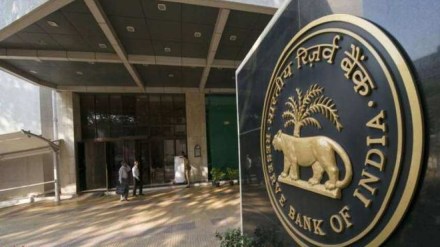By Kshipra Petkar
With the inflation outlook expected to be benign, members of the Monetary Policy Committee said that it was essential to cut repo rates in order to support growth, as per the minutes released by the Reserve Bank of India (RBI) on Friday.
Governor Sanjay Malhotra, along with Nagesh Kumar, Ram Singh, Rajiv Ranjan and Poonam Gupta, voted to decrease the policy repo rate by 50 basis points to 5.50%, while Saugata Bhattacharya voted for a 25 bps cut in repo rate.
The apex bank reduced the policy repo rate by 100 bps in quick succession since February, and under the current circumstances, monetary policy is left with very limited space to support growth, the release said. Hence, all six MPC members agreed to change the stance from ‘accommodative’ to ‘neutral’.
Malhotra said that even though growth is steady, it is lower than the aspirations, and the outlook for inflation is more benign than what they had anticipated in the April policy. “The growth forecast remains the same as the outturn of last year, which was 6.5%. On the whole, I believe that, given the current macroeconomic conditions and the outlook, monetary policy needs to support growth, while remaining consistent with the objective of price stability.”
The governor also said that on the investment front, the recovery post-Covid has been largely led by public investments, while private sector investments have been weak despite high capacity utilisation and improved corporate balance sheets.
Moreover, heightened global uncertainties may put on hold investment decisions by businesses, underscoring the need for growth-supportive policies, he said.
Kumar said that a “heavier-than-expected cut in policy rate” would send a clear message that India is serious about supporting economic growth momentum and would spare no effort in terms of policy interventions.
“The difficult external environment is likely to further complicate the economic growth outlook for 2025-26, especially for the manufacturing sector outlook, with implications for job creation. It calls for supporting growth through both fiscal and monetary policy,” he said.
Bhattacharya, too, had similar views. He said that in the prevailing uncertainties, a measured and cautious progress in policy easing would be more appropriate at this time.
Singh highlighted that a relatively big rate cut would mean that the interest rate differential with the US Fed would reduce to the lowest levels in recent times. “This, ceteris paribus, can put pressure on the rupee, especially vis-à-vis the USD. However, given the robust fundamentals of the Indian economy, including a comfortable current account situation, any pressure on the rupee is likely to be confined to the short run. Further, a pick in growth can more than offset the adverse effect of reduced interest rate differentials, if any,” he added.
He also pointed out that a 50 bps cut would not cause any overheating in the economy, as there are no indicators of a demand-pull inflation.
“From a near-term perspective, there is no visible sign of any adverse impact on vegetable prices from the unusually early onset of monsoon,” he said. “Going forward, edible oil prices are expected to decline, supported by the recent reduction in the import duty (from 20% to 10%), strengthening the benign inflation outlook,” he added.
With a rate cut of 50 bps, several liquidity measures taken by the RBI, along with a CRR cut from September onwards, would help banks boost credit growth while protecting margins in a rate easing cycle, Ranjan said.
The newly appointed MPC member, Poonam Gupta, said that with the headline inflation aligning with the target going ahead, it hints that there is enough room for the monetary policy to provide support to the economy. Gupta too was of the same view that a 50 basis point rate cut would help in fostering policy certainty and faster transmission than a staggered rate cut, and would be more effective in countering the challenges emanating from the global economy.
